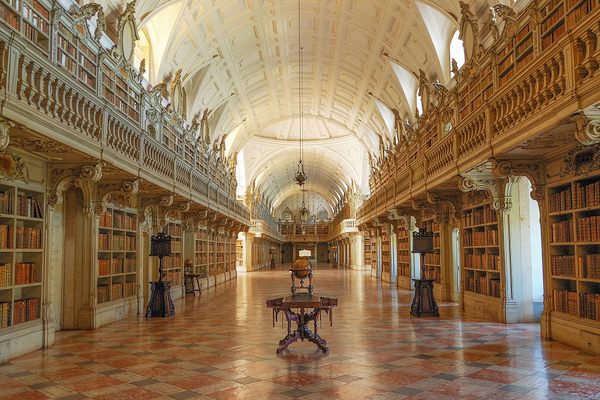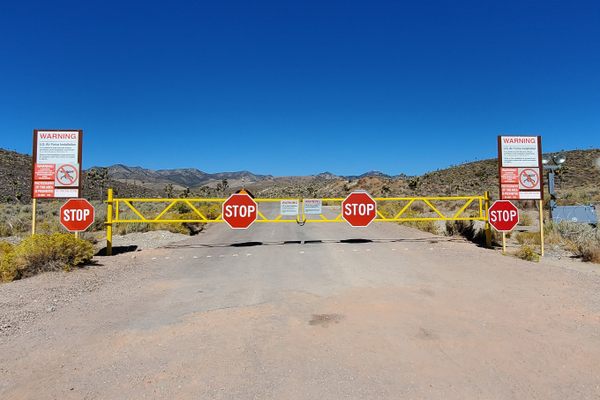The Early, State-Sanctioned LSD Experiments in Communist Bulgaria
Bulgarians were turning on, tuning in, and dropping out long before hippies.

Prof. Marina Boyadjieva (first row, second right) with colleagues from the Multiprofile Hospital for Active Treatment in Neurology and Psychiatry St. Naum in Sofia, Bulgaria. (All Photos: Jordan Todorov)
LSD is usually associated with the hippie counterculture of the late 1960s. What has not been known until recently is that dozens of experiments involving the psychedelic drug were carried out in Communist Bulgaria, from 1962 to 1968, by the Bulgarian psychiatrist Marina Boyadjieva. Among the human guinea pigs were doctors, artists, miners, truck drivers, and even prisoners and mentally ill patients. These research subjects were involved in some 140 trials.
Years before Timothy Leary’s famous 1966 exhortation to “Turn on, tune in, drop out” and the Beatles’ “Lucy in the Sky with Diamonds,” LSD experiments were taking place in Bulgaria in the early years of the Cold War, where recreational drugs were completely unknown. Mind you, this was all happening legally and with the state’s blessing.
The experimental reproduction of psychosis in mentally healthy people was a hot topic in pharmacology and experimental psychiatry circles after World War II. Psychiatrists clamored to use so-called psychotomimetic drugs–chemical agents that reliably and dose dependently induce psychoses, like hallucinations and delusions–in their research. One of the most promising psychotomimetic drugs of the time was LSD.

A drawing from Prof. Boyadjieva’s doctoral thesis, Experimental psychological research on the psychotomimetic action of LSD-25.
Their aim for these experiments with LSD was to allow scientists to understand psychotic disorders like schizophrenia better by using the drug to mimic the effects of a naturally occurring psychosis. There were some similarities between drug-induced psychoses and natural ones, but it was easier to do a controlled study when causing psychosis through drugs.
LSD was first synthesized on November 16, 1938, by Swiss chemist Albert Hofmann at the Sandoz Laboratories in Basel, Switzerland. Sandoz produced the drug under the generic name Delysid, and in the early 1960s spent about three million dollars to distribute samples of it to universities and mental hospitals worldwide. The company hoped that someone might find a practical application for the drug, in which case they would flood the market with it the way they had done with barbiturates and tranquilizers.
Professor Boyadjieva was lucky enough to get her hands on a small batch of LSD. At the time she was a research assistant at the Department of Psychiatry at the Medical University of Sofia, in Bulgaria. “In 1961, I met a Sandoz representative by the name of Mr. Burge. He told me they had LSD in doses of 0.025 mg. This was the so-called LSD-25,” recalls Boyadjieva. “In the beginning, I asked for a box of 50 ampoules, and later Mr. Burge brought me more.” She thought she could create an experimental model of psychosis with the help of LSD. And she did.

A young Boyadjieva in Paris, 1961.
“I administered refined LSD in small doses to the volunteers. It was a wholly organic substance. Clear as a teardrop!” says Boyadjieva. She did the experiments at the Multiprofile Hospital for Active Treatment in Neurology and Psychiatry–St. Naum, in the Bulgarian capital of Sofia. Most of the volunteers heard about the unusual experiments through the grapevine, with one person bringing another and then that person inviting others. The participants formed a tight circle around the professor.
Generally, the volunteers would ingest a sugar-coated tablet of Delysid containing 0.025 mg of LSD, or be injected with 100 micrograms of the drug. The substance was administered on an empty stomach or after a light breakfast. It kicked in 30 minutes to an hour later and its effects wore off with time. However, there was always a nurse on duty with a shot of 50 mg of the antipsychotic drug Chlorpromazine in case ill effects arose. Separate records were kept for each volunteer and they read like pulp fiction, says Boyadjieva.

Professor Venko Alexandrov, one of the original participants.
Professor Venko Alexandrov, now a respected university teacher and the director of an anesthesiology and resuscitation clinic, was one of the participants in the LSD experiments in the 1960s. Now 71, Alexandrov remembers his first LSD trip as if it were yesterday. The year was 1964 and he was a fourth-year medical student, aged 24.
“The nurse injected me with LSD and shut the door behind my back. I was in a room full of manic-depressive patients in depressive relapse. Twenty minutes later I felt a rush of warmth in my stomach,” says Alexandrov. “The waves began to bubble, rising higher and higher, and I felt great. In the end, I burst out in a mighty satanic cackle, infecting everyone else in the room. It was a great fun!”
Several painters also willingly participated in the LSD experiments. Some of them even brought easels and paints with them, believing they would be hit with bursts of inspiration. The drawings made during the LSD sessions were later included in Boyadjieva’s doctoral thesis. But according to her findings, LSD cannot actually make one more creative. However, it can make a person “see” letters and words in different colors and experience synesthesia.

A drawing made by one of the participant in the Bulgarian LSD tests.
In addition to experimenting on consenting healthy volunteers, Boyadjieva did so on mentally ill patients as well, who could not consent. In 1966, she conducted a series of tests on patients with schizophrenia and manic depression. Most of their reactions were unpredictable. A 22-year old man downed Boyadjieva’s ink bottle. A 35-year old woman started to feel quite sensual and became vulgar. A Norwegian research subject wanted to fry the goldfish in the professor’s aquarium.
Boyadjieva’s activities soon came to the attention of the army. “The Cold War was at its peak. Apparently our military had heard some disconcerting things about the LSD experiments conducted in the West at that time,” recalls Boyadjieva. “They were interested if the drug could be used as a weapon of mass destruction or a truth serum. They literally asked me: “Can they [the West] make us go crazy with it?”

Prof. Boyadjieva in Algeria in 1966.
As per the army’s request, she conducted experiments on two young soldiers in the premises of the Military Medical Academy, next door to the Alexandrovska University Hospital in Sofia, where she was then working. She signed a confidentiality agreement and injected the soldiers with 25 micrograms of LSD in the presence of a colonel and a military psychiatrist. The experiment was filmed by the military, which confiscated all reports on it. Boyadjieva never heard from the army officials again.
Bulgaria wasn’t the only country behind the Iron Curtain that was interested in LSD experiments back then. One of the early pioneers in the study of LSD and its possible medical benefits was a young Czech doctor by the name of Stanislav Grof. Starting in 1958, he began conducting his clinical experiments with LSD in the most unlikely of places–the Prague Psychiatric Research Institute. “If I am the father of LSD,” Hofman, the drug’s inventor, famously said, “Stan Grof is the godfather.”
Another Czech physician, Dr. Milan Hausner, directed a team of thirty psychiatrists at a clinic near Prague and treated over 700 patients in 6,000 sessions between 1956 and 1974. The Czech army also began looking into whether LSD could be used as a weapon in the Cold War. These tests lasted until the 1970s, even as LSD became more notorious around the world.

Changes during graphology test with volunteers under the influence of LSD. 1-Before administration of LSD. 2- 1½ hour after administration of LSD. 3 - 2½ hour after administration of LSD. 4 - 3½ hour after administration of LSD.
By the mid-1960s, the drug had become subject to increased scrutiny in the West, due to its popularity as a recreational drug. After protests from the American government, Sandoz stopped its legal shipments of Delysid to the U.S., Theodore X. Barber writes in LSD, Marihuana, Yoga, and Hypnosis, and placed their entire supply in a laboratory in New Jersey, in the hands of the U.S. National Institute of Mental Health (NIMH).
By August 1965, the Swiss company had ceased manufacturing the chemical entirely. That same year the U.S. Food and Drug Administration began to withdraw the licenses for experimenting with the drug on humans. On October 6, 1966, California outlawed the hallucinogen; other states were quick to follow.
During this time, NIMH reduced its LSD research programs from over a hundred to only a few. In 1969, only six experiments were carried out in the U.S. That year Boyadjieva successfully presented her thesis, “Experimental Psychological Research on the Psychotomimetic Action of LSD-25,” and received a Doctor of Medical Science degree from the Medical University of Sofia.

Another drawing by one of the participants.
“After my thesis defense I met with the Sandoz representative Mr. Burge one more time, and I told him that I need more LSD. I told him that the military wanted me to experiment further. He said “I’m sorry, Madam, but we destroyed all the reserves,” says Boyadjieva.
In 1974, the National Institute of Mental Health released findings that concluded that LSD had no therapeutic use, and the few remaining research projects were abandoned. This was the end of an age of optimism and belief in the healing powers of LSD.
The bizarre story of the LSD-induced psychoses in Communist Bulgaria remained virtually unknown until recently. Most people were unaware that drugs were even present there at all. “In the end of the 1960s Bulgaria was a virgin country when it came to recreational drugs,” says Boyadjieva.

Boyadjieva in her home.
After her time researching therapeutic applications of LSD in the 1960s, Boyadjieva went on to work as an addiction consultant for the World Health Organization, later chairing the State Psychiatric Hospital for the Treatment of Drug Addictions and Alcoholism, outside Sofia. “The first wave of drug addiction hit Sofia in the early 1970s. The drug of choice was morphine,” she says. “Then came the amphetamines and then heroin in the 1990s, and all hell broke loose.“
Boyadjieva was able to understand the strong pull that drugs had on her patients. During her early experiments, she tried LSD a few times herself, “out of scientific interest” as she puts it. It was helpful, she says: the drug enabled her to gain an insight into the world of the mentally ill by experiencing schizophrenia-like symptoms herself.
“One time I took LSD with the medical students. When I got home, my husband and children, who knew of the experiments, played “Lucy in the Sky with Diamonds,” Boyadjieva recalls. “I went to the window and saw a moving shadow. I got tense but I was aware it was all an illusion.”




















Follow us on Twitter to get the latest on the world's hidden wonders.
Like us on Facebook to get the latest on the world's hidden wonders.
Follow us on Twitter Like us on Facebook